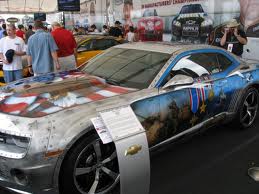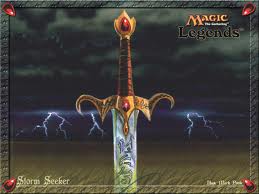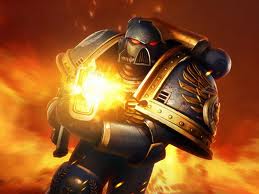What, like write you a song or send you a guitar?
56 posts
• Page 2 of 3 • 1, 2, 3
Getting a new guitar, anyone have a preference?
Share? D:
What, like write you a song or send you a guitar?
-

Brad Johnson - Posts: 3361
- Joined: Thu May 24, 2007 7:19 pm
I'm thinking if you like telecasters, you're probably going to enjoy other fenders. A quick search will tell you the difference between neck "scales", fender tend to be shorter, gibson longer, PRS in between and most other companies are subs of either Fender or Gibson
To the OP, any info about the make and model of your dad's Tele? I'm rather partial to them myself, and I'd just be curious to know. Anyway, I wouldn't restrict your search to just Fender/Gibson; a lot of people get really caught up in the brand name even if these big name companies often rest on their laurels and are sometimes outstripped by rivals or even their own subsidiary brands. Don't be afraid to look into knockoffs, this is especially true of Gibsons, but the catch there is that the high-quality knockoffs (Navigator/Edwards, Tokai, etc) can still be fairly pricey. I certainly would be worried about spending less than 600 on something that says "Gibson" on the headstock, so just be sure to read up. As far as Fenders go, a lot of people have given great praise to the Squier "Classic Vibe" models which apparently equal or better the Fender Mexican standards for under $400. Unfortunately though, I did play a couple in a shop and felt the neck finishes to be very sticky and plastic-feeling, but that's just one man's opinion.
Anyway, maybe it's a bit early for you to know, but the style of music you play should factor into what kind of guitar you want. To me, so much of it is about the neck. First of all, there's scale length, as was mentioned earlier in my response to Lord Elendiir. Gibsons are have a bit of a shorter neck, which can make things a little easier to play because you don't have to reach as far from fret to fret, and the strings will feel slightly spongier. However, the higher frets might feel cramped, or maybe you have larger hands, so there's that. On this issue I will say that I mostly play Fender scale necks, but I will admit that the smoothest playing guitar I ever played was a $5000 Navigator brand Les Paul knockoff in Japan. Besides the length of the neck, there's also the profile, which is the thickness. Vintage style necks will normally be a good bit fatter, and then you have the thinner necks which are generally more seen on "shred" guitars. Apart from the neck profile, there's the fingerboard radius. Fingerboard radius is expressed as the radius of a circle, so a neck with a smaller radius will have a rounder fingerboard, and a larger radius will have a flatter fingerboard. Many people automatically opt for the flatter radii in saying that it allows you to lower the action (how far you have to press the strings) and bend more easily without "fretting out" or causing any fret noise. This is particularly notable on my Japanese Fender 62' style Telecaster, which has the roundest radius you can get, "7.5. However, many people find rounder radii more comfortable for rhythm work, particularly barre chords. One compromise which you can find on some guitars (like my Charvel San Dimas and most Warmoth necks) is a compound radius which is rounder at the lower end and higher at the treble end so it's made a bit easier for both "rhythm" and "lead" styles. Another thing to consider is neck wood. The vast majority of necks are made out of maple, but fingerboards are commonly either rosewood or maple (if it's maple, then the neck/fingerboard can be just one contiguous piece), and sometimes ebony. It'll be hard to say which you prefer before you get some playing experience, and there's a little bit of a difference in sound, but maple feels a bit harder, and rosewood a bit softer and is said to collect/interact with the oils from your hands more noticeably. I don't have much experience with ebony, but I believe it's supposed to have the hard feel of maple with the mellower sound of ebony. However, as was mentioned earlier in this thread, wood has a much lower effect on the sound of an electric guitar than an acoustic. A last thing to consider with the neck is how many frets it has. Vintage style guitars tend around 21, but 22 is more common these days, and 24 is not uncommon. This just gives you access to a few higher notes. 24 fret necks are generally more commonly a feature on "shred" style guitars, though my Charvel only has 22.
Aside from neck issues, you'll want to consider what you might want out of pickups and tremolo units, but I don't want to go into the same amount of detail on these items as I have on necks and make this post an unreadable novel-length treatise. My advice to you is, play some guitars in local stores, then go home and do lots of internet research on the ones you liked. However, in my mind, playing in store isn't the holy grail of information gathering that some people make it out to be. Many stores don't actually keep their instruments that well set-up, so even a nice guitar can feel like complete crap. Both of my main guitars were purchased online and had better setups out of the box than many instruments I've played in stores. Don't be afraid to buy used!!! You can get great deals. My Charvel (which I keep mentioning because I'm still in the obsessed honeymoon phase) was a used mint which ran about half of what it would have new, so I in fact got an $1100 dollar guitar at your maximum price point of $600.
-

i grind hard - Posts: 3463
- Joined: Sat Aug 18, 2007 2:58 am
http://www.guitarfetish.com/
-

Pete Schmitzer - Posts: 3387
- Joined: Fri Sep 14, 2007 8:20 am
I just wanted to say WHOA. I know about Rondo and have warily eyed their stuff for a while and considered purchase before, but I was unfamiliar with Guitar Fetish. These Tele-thinline knockoffs with the p-90 soapbars are SO HOT. I have to go read about these immediately.
Like I said, they are very similar. However, I've heard Rondo's stuff it just a tad higher quality (better tuners, frets are filed down more). However, I've heard that Xavieres are great for the money, too.
-

GPMG - Posts: 3507
- Joined: Sat Sep 15, 2007 10:55 am
Go with PRS. They are very good guitars, and are easy to customize. Customization is one of the biggest parts in playing guitar. Ask your dad about it. Yes I am a drummer, but I have taken this from many guitar players that I have worked with (professionally if I might add).
http://www.guitarcenter.com/PRS-Tremonti-SE-Electric-Guitar-H70031-i1716427.gc
http://www.guitarcenter.com/PRS-Tremonti-SE-Electric-Guitar-H70031-i1716427.gc
-

tiffany Royal - Posts: 3340
- Joined: Mon Dec 25, 2006 1:48 pm
It depends on the sound you want, really, as well as your preference. I can make some general recommendations for you, though. If you are going to be using a wide variety of tunings, or nonstandard tunings, and also want a bright sound, you can't beat a Jazzmaster. If you want a chunkier and heavier sound, find a guitar with humbuckers. I've always found ESP to be better than Ibanez if you're into hardcoe. Personally, I play Alternative/Indie music most of the time, and I find that my Stratocasters suit me just fine. If you are considering getting a Strat (be it a Squier, MIM, or American Made), I'd highly suggest checking out http://www.musiciansfriend.com/accessories/lace-sensor-blue-silver-red-3-pack-s-s-s-pickup-set instead of the stock pickups, especially if you go with a Mexican-made or Squier (to replace the bad stock pickups with better ones). Personally, I find them better than the stock pickups for American Standard strats, too - they have more sustain, a more versatile sound, and almost NO string-pull.
Personally, my dream guitar is a Maton http://www.youtube.com/watch?v=eF8MWQzPupk. That and a vintage Jazzmaster.
Do not buy PRS. They are overpriced wall-hangers.
Personally, my dream guitar is a Maton http://www.youtube.com/watch?v=eF8MWQzPupk. That and a vintage Jazzmaster.
Do not buy PRS. They are overpriced wall-hangers.
-

Jordan Fletcher - Posts: 3355
- Joined: Tue Oct 16, 2007 5:27 am
Snip
Ah, I was hummin' and 'ahhin' about that for a while too, should have google'd it but I'm incredibly lazy.
And PRS are NOT overpriced wall-hangers...The tone on those things is amazing. I would have bought one if I could find a 24 fret/hard tail in my price range, or I could take that "O" off the Mikael Akerfeldt signature
-

Mistress trades Melissa - Posts: 3464
- Joined: Mon Jun 19, 2006 9:28 pm
Go with PRS. They are very good guitars, and are easy to customize. Customization is one of the biggest parts in playing guitar. Ask your dad about it. Yes I am a drummer, but I have taken this from many guitar players that I have worked with (professionally if I might add).
http://www.guitarcenter.com/PRS-Tremonti-SE-Electric-Guitar-H70031-i1716427.gc
http://www.guitarcenter.com/PRS-Tremonti-SE-Electric-Guitar-H70031-i1716427.gc
-

Emma Copeland - Posts: 3383
- Joined: Sat Jul 01, 2006 12:37 am
Get yourself a cheap Fender.
Don't spend $ 600.00 just because you can.
Get yourself a cheap Fender and practice and get better.
It won't be long before you will be good enough to want a nicer instrument but you'll know enough about your instrument to actually make an informed choice.
If you buy a more expensive guitar you should be able to justify why it is a more expensive guitar.
Hope that helps.
Az
Don't spend $ 600.00 just because you can.
Get yourself a cheap Fender and practice and get better.
It won't be long before you will be good enough to want a nicer instrument but you'll know enough about your instrument to actually make an informed choice.
If you buy a more expensive guitar you should be able to justify why it is a more expensive guitar.
Hope that helps.
Az
-

Mike Plumley - Posts: 3392
- Joined: Wed Sep 05, 2007 10:45 pm
Customisation, yes! I have one of those weird Steinberger headless jobs, I re-wired the tone control to put the neck pickup in series with the bridge and middle; that's how to overdrive the front end of a valve amp.
I have a Hohner bass in the same style: uncustomised in my case, I love the "boingy" sound it has as it is! Actually quite a nice instrument, except that it's impossible to balance on your lap, of course.
-

Thema - Posts: 3461
- Joined: Thu Sep 21, 2006 2:36 am
I have a Hohner bass in the same style: uncustomised in my case, I love the "boingy" sound it has as it is! Actually quite a nice instrument, except that it's impossible to balance on your lap, of course.

-

Scarlet Devil - Posts: 3410
- Joined: Wed Aug 16, 2006 6:31 pm
The only reason that things are made out of the country is because other countries do just as good of a job manufacturing them.
Regardless, however, Fender is still Fender. They make good stuff, but it's still expensive. There are a number of clones that function just as well as a Telecaster at a lower price point than the Standard (again, check the links I put up).
Regardless, however, Fender is still Fender. They make good stuff, but it's still expensive. There are a number of clones that function just as well as a Telecaster at a lower price point than the Standard (again, check the links I put up).
-

Ludivine Dupuy - Posts: 3418
- Joined: Tue Mar 27, 2007 6:51 pm
Well, I agree. Squier (a division of Fender) makes excellent instruments (I have tow of their basses that I love) and their most expensive instruments are about $350 new
I've always liked the darker tone that the humbuckers provide over the single-coils...it's much better for jazz and blues, and still fantastic when distorted. P90s also work great for this as well, while I wouldn't tend to use single-coils for much other than hard distortion or other more colorful stuff (country, etc.).
I'd also tend to stay away from the setups with a single humbucker (usually closest two the bridge) and two single-coils (usually closest to the neck). There are many guitar configurations that offer this, though I tend to find you don't get the best of either world.
-

Lauren Dale - Posts: 3491
- Joined: Tue Jul 04, 2006 8:57 am
Do not buy PRS. They are overpriced wall-hangers.
Customisation, yes! I have one of those weird Steinberger headless jobs, I re-wired the tone control to put the neck pickup in series with the bridge and middle; that's how to overdrive the front end of a valve amp.
-

KIng James - Posts: 3499
- Joined: Wed Sep 26, 2007 2:54 pm
Really, you have a Steinberger? Very cool. My roommate has been looking into getting one, inspired by Holdsworth. Speaking of Holdsworth gutiars, I think that Carvin model looks interesting, and it'd be interesting to try something with such a flat fingerboard radius ("20!!!), considering the way he plays, the action is probably super low. I nearly bought an old Ibanez Holdsworth model that I saw on Craigslist for about $300, but I wasn't entirely convinced.

Was the Ibanez the AH10? I had a chance at one once, it was in, and I quote, "metallic frog green", but the big chunky locking trem put me off.
-

Alisia Lisha - Posts: 3480
- Joined: Tue Dec 05, 2006 8:52 pm
This reminds me... Still need to scrounge up $60 for a uke. 

-

Peter lopez - Posts: 3383
- Joined: Mon Sep 10, 2007 5:55 pm
Only a cheaper all wood one, not the proper carbon fibre/phenolic resin job, unfortunately. 
Was the Ibanez the AH10? I had a chance at one once, it was in, and I quote, "metallic frog green", but the big chunky locking trem put me off.

Was the Ibanez the AH10? I had a chance at one once, it was in, and I quote, "metallic frog green", but the big chunky locking trem put me off.
Yeah, it was an AH10, in red. The trems don't look particularly chunky to me, but I'm mostly playing a guitar with a Floyd right now, so I might be biased.
-

Quick Draw III - Posts: 3372
- Joined: Sat Oct 20, 2007 6:27 am
I'm (still) a beginner and own a Fender. It's a fine guitar. Besides, the player matters a lot more than the instrument. D:
My friend has an Epiphone Les Paul. Can't recall the price. The Epiphone is great anyway.
My friend has an Epiphone Les Paul. Can't recall the price. The Epiphone is great anyway.
-

Russell Davies - Posts: 3429
- Joined: Wed Nov 07, 2007 5:01 am
I was looking at the Steinberger ZT3 for ages when I was last looking at guitars. I still want one, but I'd want to try one before spending that kind of money. The neck might be too thin.
Might still consider it when I get rid of my EGEN-8 (Don't judge, it's actually a very nice guitar, even considering it's a DF sig), but it depends really, I'm very tempted to get another V or a Jackson SLS, but again - would prefer to try it, another super thin neck & body.
Might still consider it when I get rid of my EGEN-8 (Don't judge, it's actually a very nice guitar, even considering it's a DF sig), but it depends really, I'm very tempted to get another V or a Jackson SLS, but again - would prefer to try it, another super thin neck & body.
-

Brandi Norton - Posts: 3334
- Joined: Fri Feb 09, 2007 9:24 pm
I'm (still) a beginner and own a Fender. It's a fine guitar. Besides, the player matters a lot more than the instrument. D:
My friend has an Epiphone Les Paul. Can't recall the price. The Epiphone is great anyway.
My friend has an Epiphone Les Paul. Can't recall the price. The Epiphone is great anyway.
-

benjamin corsini - Posts: 3411
- Joined: Tue Jul 31, 2007 11:32 pm
I was looking at the Steinberger ZT3 for ages when I was last looking at guitars. I still want one, but I'd want to try one before spending that kind of money. The neck might be too thin.
Might still consider it when I get rid of my EGEN-8 (Don't judge, it's actually a very nice guitar, even considering it's a DF sig), but it depends really, I'm very tempted to get another V or a Jackson SLS, but again - would prefer to try it, another super thin neck & body.
Might still consider it when I get rid of my EGEN-8 (Don't judge, it's actually a very nice guitar, even considering it's a DF sig), but it depends really, I'm very tempted to get another V or a Jackson SLS, but again - would prefer to try it, another super thin neck & body.
-

Nikki Hype - Posts: 3429
- Joined: Mon Jan 01, 2007 12:38 pm
http://i3.squidoocdn.com/resize/squidoo_images/-1/lens7454892_1255019577Ibanez_JEM7VWH_Steve_Vai_Electric_Guitar.png ?
-

Miguel - Posts: 3364
- Joined: Sat Jul 14, 2007 9:32 am
Talking about signature guitars, http://www.tdpri.com/telephoto/data/534/ric350sh.jpg. Very expensive though, if you could ever get one, but imho a thing of cheesy beauty.
-

CArlos BArrera - Posts: 3470
- Joined: Wed Nov 21, 2007 3:26 am
My friend has an Epiphone Les Paul. Can't recall the price. The Epiphone is great anyway.
It's what I have. It's under $200. I think I paid $150 at Guitar Center a few years back.
-

Maya Maya - Posts: 3511
- Joined: Wed Jul 05, 2006 7:35 pm
56 posts
• Page 2 of 3 • 1, 2, 3

